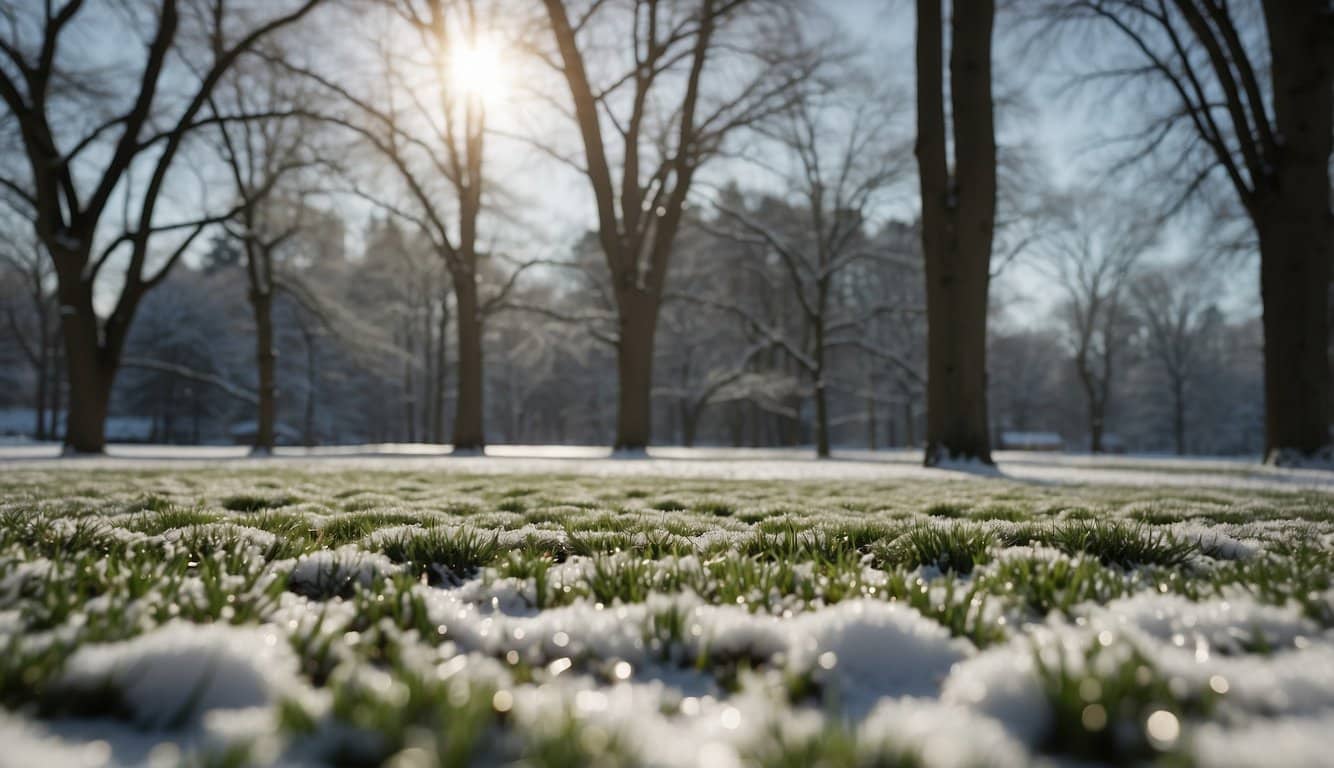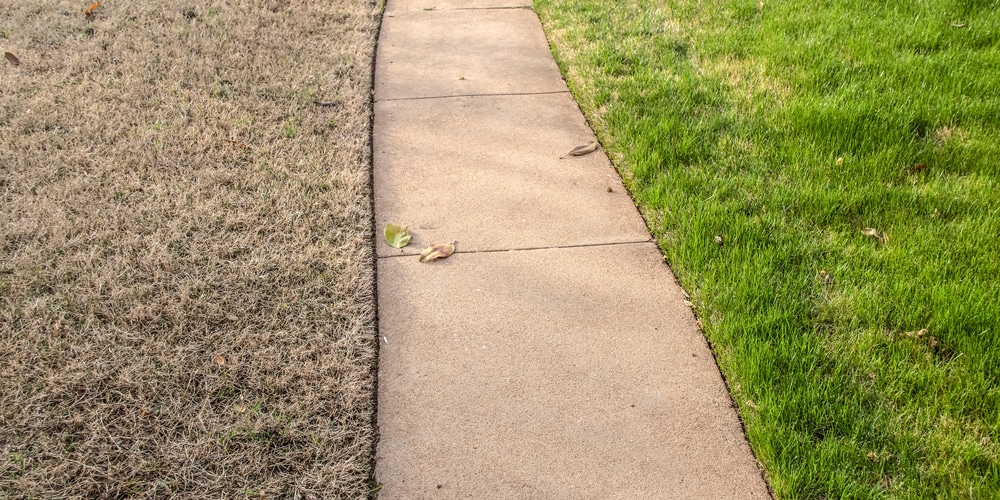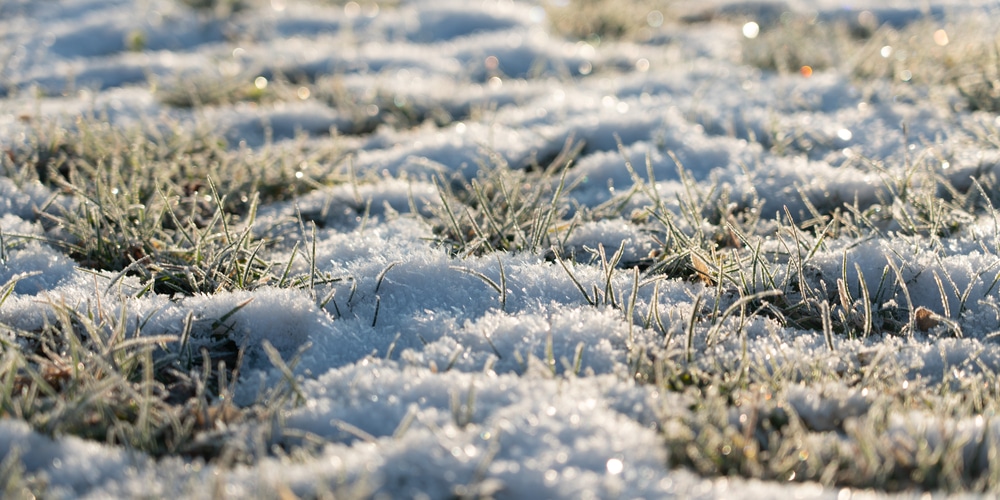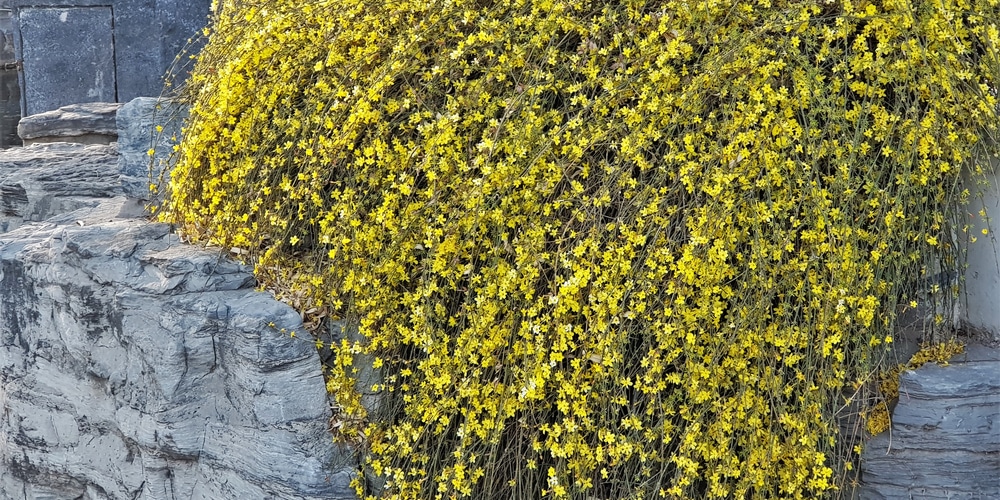Illinois Winter Lawn Care (The Short Version)

During the chilled winter months in Illinois, your lawn enters a dormant state, but that doesn’t mean your lawn care duties are on hiatus. It’s crucial to adapt your routine to accommodate the cold season’s demands to ensure a robust return in spring.
Fertilization Timing:
For starters, apply fertilizer to your lawn in the fall to prepare it for the winter. This will fortify the grass roots with the necessary nutrients to last through the frigid weather.
Aim for early November for this task.
Mowing Practices:
Adjust your mowing schedule accordingly.
Continue to trim the grass until growth ceases.
The final cut of the season should be shorter to prevent snow mold formation, a common winter lawn affliction.
Lawn Traffic:
Be mindful of foot traffic on your frosty lawn. Grass blades are brittle when frozen, and excessive walking can cause significant damage.
Leaf Management:
Use fallen leaves to your advantage; rather than discarding them, mulch them with your mower to add a protective nutrient-rich layer to the soil.
Aeration:
Consider aerating your lawn prior to winter, as this can improve the soil’s nutrient absorption and mitigate compaction from snow cover.
Watering:
Maintain a light watering schedule if conditions are dryer than usual, but do avoid any watering before a freeze to prevent damaging ice formation on the grass.
Essential Winter Lawn Care Practices
As an Illinois homeowner, preparing your lawn for the harsh winter is crucial. Proper practices ensure your grass stays healthy and is ready to flourish in spring.
Mowing and Trimming Guidelines
Your mowing routine should adapt as temperatures drop.
Continue mowing until your grass stops growing, which tends to occur when daytime temperatures consistently sit below 50°F.
Aim to cut your grass to about 2 to 2.5 inches in height for its final trim of the season, as shorter grass can better resist diseases like snow mold.
Watering Schedule Adjustments
Even during winter, your lawn might need water, particularly during periods without snowfall.
Water your lawn deeply when the temperature is above 40°F and there’s been a lack of precipitation. This helps prevent desiccation and keeps grass roots hydrated.
Applying Winter Fertilizers
Fertilization before the cold sets in is all about timing.
Apply a winter fertilizer rich in nitrogen as it helps in accumulating food reserves which are crucial during dormancy.
The ideal time for fertilizing is early fall, around September, as it assists in recovery from summer stress and early November to prepare for the winter.
Aeration and Overseeding Timing
Aeration should be done just before winter hits, typically in early fall. This allows for better penetration of oxygen and nutrients.
Similarly, overseeding should be carried out in the fall to give seedlings the chance to establish before frost and to take advantage of autumn rains.
Addressing Common Winter Lawn Issues
As an Illinois homeowner, preparing for winter’s challenges is crucial to maintain a healthy lawn. Addressing common issues like snow mold, rodent damage, and winter desiccation early on will set you up for a lush, green spring.
Dealing with Snow Mold
Snow mold occurs when lingering snow cover melts, revealing circles of matted, discolored grass. To combat this:
- Preventive measures: Keep your lawn mowed to a shorter length before the first snowfall to reduce grass matting.
- Post-snow steps: Gently rake affected areas to promote drying and prevent the spread of the fungus.
Preventing Rodent Damage
Rodents, such as voles, can cause extensive damage by creating runways and feeding on grass roots under the snow. Prevention methods:
- Habitat reduction: Remove potential rodent shelters, such as leaf piles, before snowfall.
- Repellents: Consider applying a safe, pet-friendly rodent repellent around your lawn perimeter.
Protecting Against Winter Desiccation
Winter desiccation leads to dry, brown grass patches due to wind and lack of water while the ground is frozen.
- Watering tactics: Water your lawn during warm spells when the ground is thawed.
- Mulching: Apply a thin layer of mulch to retain soil moisture and protect the grass crowns.
Winter Equipment and Tool Maintenance

During the winter months in Illinois, proper care for your lawn care equipment ensures longevity and peak performance for the coming spring. Here is how you can maintain your tools:
Gas-Powered Equipment:
- For four-stroke engines, such as those in most walk-behind mowers, an end-of-season oil change is crucial.
- Drain the fuel or add a fuel stabilizer to prevent the gasoline from degrading and damaging the engine.
- Clean or replace air filters to ensure they are not clogged with debris, as this can impair efficiency.
Electric Equipment:
- Inspect and clean all electrical contacts and battery terminals to ensure reliable operation.
- Charge the batteries periodically throughout the winter to maintain their lifespan.
General Tool Care:
- Clean your tools thoroughly, removing any soil, grass, or debris.
- Sharpen blades of mowers and hand tools to be ready for efficient use in the spring.
- Lubricate moving parts to protect them from rust and to ensure smooth operation.
| Maintenance Task | Tool/Equipment Type | Frequency |
|---|---|---|
| Oil Change | Gas-powered | End of season |
| Drain or Stabilize Fuel | Gas-powered | End of season |
| Clean/Replace Air Filters | Gas-powered | As needed |
| Battery Maintenance | Electric | Throughout winter |
| Cleaning | All tools | After last use |
| Sharpen Blades | Mowers/Hand tools | End of season |
| Lubricate | All tools | As needed |
Preparing for the Spring Transition
As the grip of winter loosens, it’s important for Illinois homeowners to ready their lawns for the spring.
Start by examining your lawn mower to ensure it is functional for the upcoming season. Replace old oil, sharpen the blades, and check that the engine starts smoothly.
Lawn Assessment:
Survey your lawn, looking for signs of winter damage such as salt injury or matted patches, which may indicate snow mold.
Rake up any fallen branches, leaves, and debris to prevent them from choking your grass.
Soil Care:
Test your soil’s pH, and if needed, adjust it before the rush of growth.
In April, aeration might be beneficial, especially if the ground is compacted. This will improve air and water movement and set the stage for vigorous growth.
Key Lawn Maintenance Tasks:
- Raking: Use a stiff metal rake to clear debris and thatch that blocks sunlight and airflow to your grass.
- Overseeding: Fill in bare patches to encourage a full, lush lawn.
- Fertilization: Apply a suitable fertilizer to give your grass the nutrients it needs after the long winter.
- Herbicide: A pre-emergent herbicide may be necessary to manage weeds before they take hold.
Remember, timing is crucial. Patience is required — grass that has been dormant will need time to recover and grow. Start these tasks only after the last frost to avoid damaging new growth.
Frequently Asked Questions
In gearing up for winter, Illinois homeowners often have several queries about caring for their lawns in the colder months. This section addresses those essential FAQs with direct advice to ensure your lawn remains healthy throughout the winter.
What are the best practices for fertilizing a lawn before winter in Illinois?
To fortify your lawn before Illinois’ harsh winters, it’s recommended to apply fertilizer during the fall.
A late fall application helps strengthen grass roots, providing them with the nutrients needed to endure the cold season and recover more efficiently in the spring.
How can winter weather in Illinois affect lawn health, and how can homeowners prepare?
Winter weather in Illinois, with its freezing temperatures and snow, can stress your lawn. To minimize damage, keep the grass at an appropriate height heading into winter, remove debris, and ensure the lawn is well-drained to reduce ice buildup.
What steps should be taken to properly aerate a lawn before the onset of winter in Illinois?
Aerating your lawn should be done in the fall to ease compaction, allowing better penetration of water, nutrients, and air. This vital practice also helps roots grow deeply, providing a stronger foundation for the harsh winter months.
How can Illinois homeowners protect their lawn from winter diseases and pests?
Continued lawn maintenance in the fall, like removing fallen leaves and detritus, is crucial in preventing fungal growth and pest habitats. A balanced fall fertilization regime can also help build resistance against diseases and pests.
Is there a recommended mowing schedule for lawn care in Illinois during the fall?
Maintain regular mowing in the fall until growth stops, gradually lowering the cutting height. This will leave the grass short enough to reduce winter matting and discourage pests, but not so short that it becomes vulnerable to cold damage.
What are effective methods for managing snow and ice on lawns without causing damage?
Avoid the use of damaging de-icing salts near your lawn.
Instead, opt for more lawn-friendly alternatives like calcium chloride.
To prevent physical harm, avoid walking on your lawn when it’s frosted or covered in snow.

